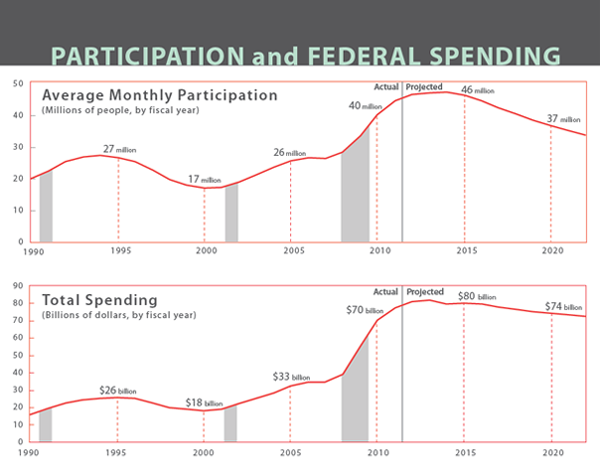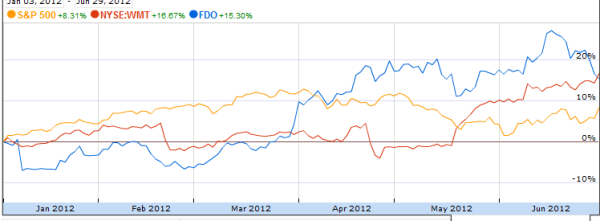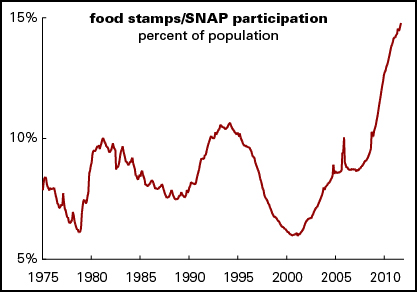July 1, 2012
When you think of food stamp usage you rarely think about big financial profits. Yet some businesses are managing to get a big piece of the food stamp pie. Last year alone the government spent a record $78 billion in food stamps. This is a large amount of money and this is why you might notice more EBT signs if you ever pay attention when you are driving around. The money when broken down by the 46 million Americans receiving this aid is not much but actually speaks to the underlying bifurcated nature of our economy. Many are stuck below poverty status and many in the middle class simply struggle to get by. The Congressional Budget Office projects that food stamp usage will be high deep into 2015. Let us examine where this money is actually going.
High usage of food stamps well into 2015
It is hard to call it a recovery when projections from the government are showing high food stamp usage well into 2015. In fact, the projection shows that in 2015 the government will spend $80 billion on food stamps:
These checks are small but speak more to the 46 million Americans on this program. Does this really sound like a recovery? The money is funneled back into the economy since this money is spent. It is interesting to see where a large chunk of this money is going:
Wal-Mart and Family Dollar are definitely benefitting from the $78 billion in spending. In a recent interview it was noted that some Wal-Mart stores derive anywhere from 25 to 40 percent of their revenue from food stamps:
“(Yahoo) Here’s where the profits come in,” Nestle says. “A vast percentage of Food Stamps’ money goes into the pockets of soda companies and snack food companies…and also the stores that sell these foods.”Wal-Mart “gets a large fraction of Food Stamp dollars,” which contributes 25% to 40% of revenue at select stores, according to Nestle. “These companies, therefore, have a vested interest in making sure Food Stamps are allowed for any purchase at all.”
The fact that Wal-Mart and Family Dollar are outperforming the S&P 500 by a rate twice as high as the large average should tell you a bit more about the underlying nature of our economy. What is also interesting is the intense lobbying from corporate groups:
“The point here is that banks that administer SNAP have a vested interest in keeping SNAP enrollments high and makers of junk foods have a vested interest in making sure that there are no restrictions on use of benefits,” she writes.”
What constitutes food? Is it okay to load up a car with junk food? We know that this will only contribute to the problem of out of control obesity but also, to increased healthcare costs down the line. Does this even matter? Many of the families receiving a few hundred a month for food stamps are unlikely to purchase well balanced meals since many are simply trying to get by.
Even if we look at the participation rate we are in record territory:
Source: LBO News
From a business perspective, this will be a steady stream of billions of dollars into the economy if you can capture it. Some have figured it out and hopefully others can see that having a record number of people on food stamps is not exactly a sign of a booming economy.




No comments:
Post a Comment